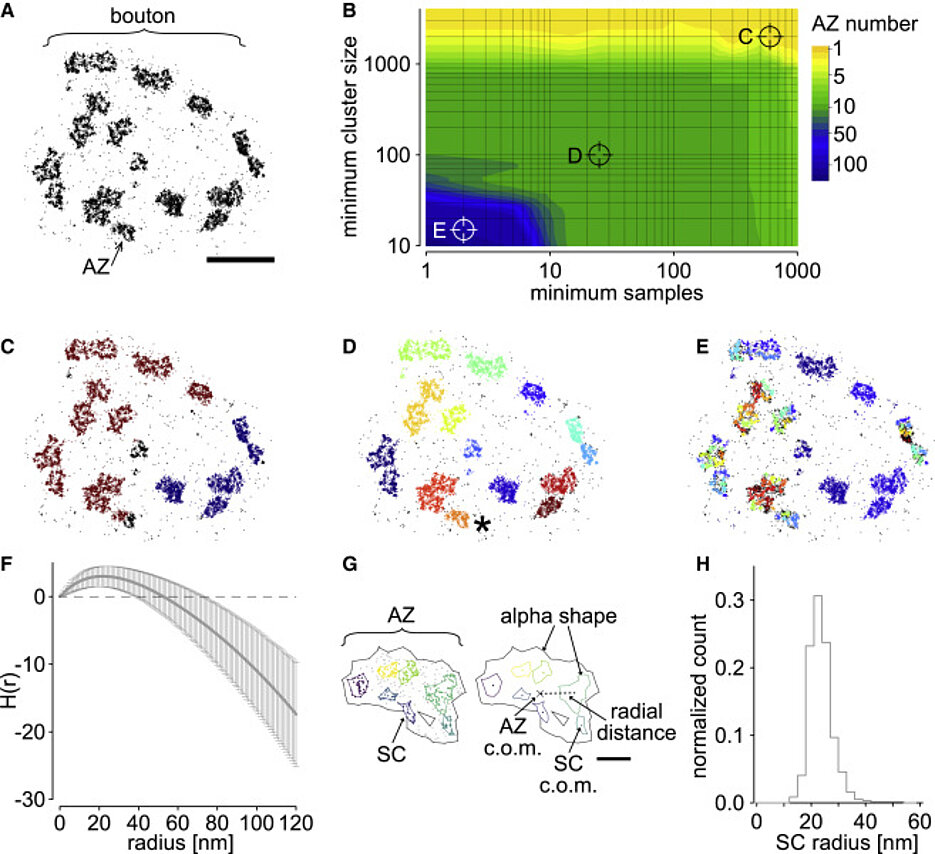Active zone compaction correlates with presynaptic homeostatic potentiation
10/05/2021Active zone compaction correlates with presynaptic homeostatic potentiation
AchmedMrestani, MartinPauli, PhilipKollmannsberger, FelixRepp, Robert J.Kittel, JensEilers, SörenDoose, MarkusSauer, Anna-LeenaSirén, ManfredHeckmann, Mila M.Paul
Cell Reports, 37, 109770
Neurotransmitter release is stabilized by homeostatic plasticity. Presynaptic homeostatic potentiation (PHP) operates on timescales ranging from minute- to life-long adaptations and likely involves reorganization of presynaptic active zones (AZs). At Drosophila melanogaster neuromuscular junctions, earlier work ascribed AZ enlargement by incorporating more Bruchpilot (Brp) scaffold protein a role in PHP. We use localization microscopy (direct stochastic optical reconstruction microscopy [dSTORM]) and hierarchical density-based spatial clustering of applications with noise (HDBSCAN) to study AZ plasticity during PHP at the synaptic mesoscale. We find compaction of individual AZs in acute philanthotoxin-induced and chronic genetically induced PHP but unchanged copy numbers of AZ proteins. Compaction even occurs at the level of Brp subclusters, which move toward AZ centers, and in Rab3 interacting molecule (RIM)-binding protein (RBP) subclusters. Furthermore, correlative confocal and dSTORM imaging reveals how AZ compaction in PHP translates into apparent increases in AZ area and Brp protein content, as implied earlier.






